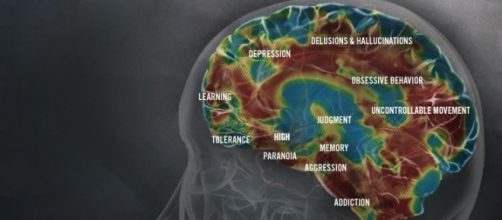Use and abuse of methamphetamine significantly increase the likelihood of cerebral Stroke, even if you are young. This finding was the result of a thorough metanalysis of the studies published so far on this topic and published in the "J Neurol Neurosurg Psychiatry" by Julia Lappin, Shane Darke, and Michael Farrell, three researchers at the University of New South Wales, Sydney, Australia.
The effects of methamphetamine on the brain
The real name for methamphetamine is (2S)-N-methyl-1-phenylpropane-2-amine, according to the strict terminology of chemistry.
Methamphetamine is a recreational drug also known as glass, ice, crystal meth or speed, and is synthesized in underground labs by cooking relatively cheap ingredients which are also easy to find.
The effects of methamphetamine on the brain are manifold as it stimulates the activity of all monoamines such as noradrenaline, adrenaline, dopamine, and serotonin. This results in a state of excitement due to the activation of several neural circuits. Along with this effect, however, methamphetamine can induce depression, obsessive behaviors, memory and learning deficits, hallucinations, delusions, uncontrolled movements, aggression behaviors and paranoia. Also, unlike what happens with cocaine where effects are much shorter, the effects of methamphetamine can last up to 12 hours.
Finally, methamphetamine quickly triggers addictive phenomena that induce consumers to consume increasing doses to achieve the same psychotropic effects.
Methamphetamine and stroke
By carefully examining nearly 80 of the most relevant studies on methamphetamine and stroke, Australian researchers have found that on top of behavioral effects and addiction, methamphetamine causes cerebral stroke especially of the hemorrhagic type, even in people under the age of 45.
Moreover, Australian researchers found that the probability of being hit with a cerebral stroke is much higher in men rather than in women.
"Route of administration associated with haemorrhagic stroke was typically oral or injecting," the authors wrote "but for ischaemic stroke inhalation was most common. One-quarter of individuals completely recovered, and a third died following haemorrhagic stroke.
One-fifth completely recovered, and one-fifth died following an ischaemic stroke."
The use of particularly powerful forms of methamphetamine is increasing and the majority of methamphetamine use occurs in Young People. Therefore it is likely that methamphetamine abuse is significantly contributing to the increased incidence of stroke among young people observed over recent years.


